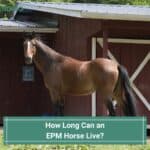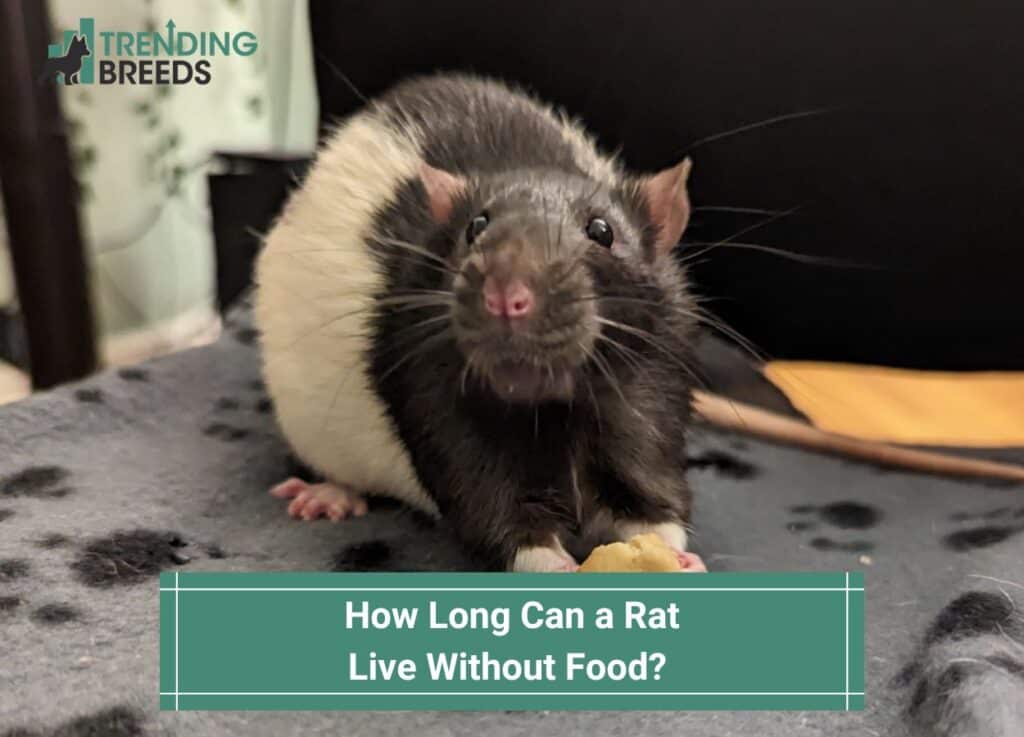
Pet rat owners who often need to stay away from home for extended periods may wonder how long can a rat live without food.
A pet rat can go up to 4 days without any food intake.
However, because the pet rat will likely not die, it is not a good idea to leave it at home without food. Consider getting someone to watch your pet rat for you.
Keep reading below for more information.
Before you scroll further down this guide, check out these other rat-related articles: Can Rats Eat Cat Food? and Do Rats Eat Roaches?.
Table of Contents
How Long Can a Rat Live Without Food?

A rat can go without food for up to four days, after which it will die of starvation. Their fast metabolism is a major factor, so they can’t go too long without eating.
Of course, the length of time a rat can go without eating varies between each rat.
When rats go without food, those with more body fat have an advantage because they can use their stored fat as an energy source, while those with less fat do not.
Your rat may be able to go without food for a while, but that doesn’t mean he should. Your rat might not pass away if it goes without food for some days, but given that you should always maintain rats in groups of at least two, they may start fighting.
They can quickly kill each other with their powerful, driven teeth. When food is scarce, rats eat each other if necessary to survive. Therefore, if you do not feed your rats, they may kill each other to avoid famine.
It’s also cruel to keep your rat without food for extended periods. They’ll be famished, stressed, and worried. You shouldn’t own one of these smart creatures if you can’t afford to provide a healthy diet.
How Much to Feed Your Rat?
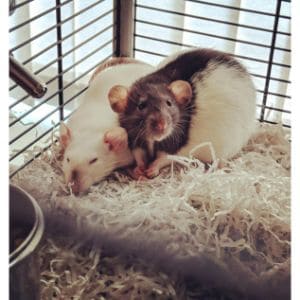
Here is a general guideline on how much to feed your pet rat.
Water
Whether consumed directly or indirectly (via high-water-content food, like fruit), rats require around an ounce of water daily.
A rodent water bottle that clips onto the side of the cage is the most convenient way to provide water for your pet rat.
At the very least, you should refill the water in the bottle once a week. Never leave an empty bottle in your rat’s cage for days.
Don’t worry too much if you don’t see your rat drinking since it may drink intermittently during the day or all at once. Monitor the water level so you can tell when it goes down.
Food
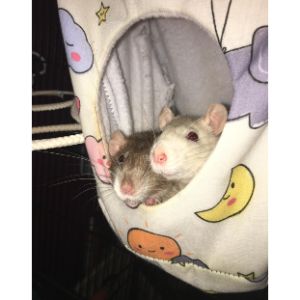
Rats can consume as much as a third of their total weight in food per 24 hours.
This does not, however, imply that this is a necessary or even healthy quantity of food. Feed mice and rats very modest amounts of food (a half handful for one rodent is plenty).
If food is scarce, rats will hoard it and gorge themselves at once. If you have multiple rats, supply enough food to prevent them from becoming aggressive towards one another and their cagemates.
What Should I Feed My Rat
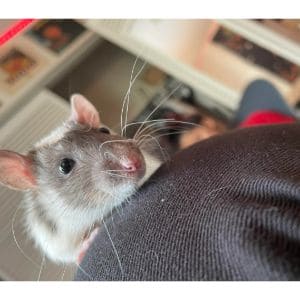
Here is a general guideline on what to feed your pet rat.
Packaged Food
If you have a pet rat, it is important to feed it a diet developed especially for rats. This is typically a pellet or block-type (basically a giant pellet) diet, as these are widely regarded as the healthiest options for rats.
The only way for a rat to get a balanced diet from a loose seed mix is if it consumes every single seed in the combination, which is unlikely.
On the other hand, feeding a rat a block or pellet food prevents it from picking and choosing which pieces it will consume. These blocks are safe for rats and can be put out for them at all times.
As a general rule, pellets are the best option when feeding a pet rat, but if you’re having trouble finding a suitable rat-specific diet, a rat and mouse meal fulfills the same general parameters (such as low calorie, low fat) is a good alternative.
However, hamster, gerbil, and other rodent diets are not suitable alternatives. Rats have trouble digesting lucerne, which is commonly found in these diets, and the dietary needs of these animals are varied.
Treats for Pet Rats

Vegetables, fruits, and other fresh meals are good for rats to eat. This is fantastic news since sharing food with your rat is fun.
However, remember that a rat’s portion size is relatively tiny (a teaspoon or half-inch cube), so don’t feed it a ton of produce at once, or it can get sick.
Here’s a list of tasty options to consider, with the caveat that providing a varied diet is vital to your pet’s health and well-being.
- Fruits like apples, pears, cherries, grapes, bananas, berries, melons, and plums.
- Vegetables like squash, bok choy, kale, parsley, bok choy, broccoli, potatoes, peas, carrot, cooked sweet potato
- Lean proteins such as braised liver as well as other lean cuts of meat
- Durum wheat and whole wheat products
- Beans (soy or others) that have been cooked.
- Yogurt (particularly organic, cultured yogurt. Avoid the sugared, flavored yogurt)
- Brown rice
- Breakfast cereals that aren’t sweetened
- Mealworms
- Biscuits for little dogs
- Occasional treats include almonds, Brazil nuts, walnuts still in their shells, high-fat sunflower seeds, and carob chips.
- Consuming some leftovers from meals is fine.
What to Avoid Feeding Rats

It’s not a good idea to feed your pet rat anything on this list because it could be unhealthy or even fatal to rats.
The following is an example of foods to avoid feeding; however, it is by no means a complete list:
- Due to its increased caffeine content, dark chocolate should be avoided even more than milk chocolate because it has no nutritional value (heavy in sugars and fats), which can contribute to dental difficulties and obesity.
- Caffeine may cause heart problems, including irregular heartbeat, arrhythmia, and even death.
- In rodent studies, mangoes and lemon peels (both high in d-limonene) have been linked to cancer.
- High consumption of raw beans or sweet potatoes (both high in oxalic acid and may cause kidney stones) is not recommended. Sweet potatoes also contain trace quantities of cyanogenic glycosides (CGs), which may cause kidney damage.
- Raw beans, especially kidney beans, can be fatal due to the lectin-phytohemagglutinin they have, which leads red blood cells to clump together. CGs convert to cyanide when consumed, but only in large enough quantities to be harmful.
- Green potatoes (which contain the poisonous alkaloid solanine in their skin)
- Peanut butter and mashed potatoes are examples of thick and sticky meals, and both pose a potential choking hazard.
- Insects (perhaps carrying parasites or poisons)
How to Avoid Obesity in Rats
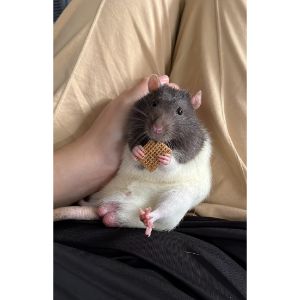
Obesity is a serious problem among pet rats. Anything they can get their paws on is fair game for them.
Caged rats are more likely to gain weight than unconfined rats. Similar to other animals and humans, obese rats are at risk for a host of medical complications.
However, despite their tiny size, the most significant issue is the growth of enormous subcutaneous fat deposits known as lipomas, which can eventually become large enough to impede movement.
The good news is that rats are naturally active pets; you can keep their weight in check by keeping them in multi-level cages, challenging them with puzzle feeders, or allowing them free access to safe outdoor exercise areas.
Also, make sure to limit “treat” foods to special occasions and only to feed them the recommended amount of all other foods based on their weight.
How Long Can a Pet Rat Be Left Alone?

Your rat will be fine if you must leave the house for the day. You can relax knowing there are enough rat pellets and water to last the day.
Several rodent experts recommend keeping rats in pairs to prevent them from getting lonely while you’re not engaging with them. However, this is not necessary for the health of your rat.
If you are away from your rat for more than two days, a trusted friend or pet sitter should be asked to check on the rat’s food and water and potentially even take the rat out for some exercise and socialization.
The bedding should be fully replaced once a week, and the rat’s waste should be removed as often as possible.
Because of how frequently rats defecate, prolonged exposure to rat poop is potentially harmful to their health.
In addition to that, it’s quite unpleasant. Think about how you’d feel if you couldn’t flush the toilet in your home. Mice and rats are similar in that they thrive with regular human interaction and love the company of other animals.
An adequately socialized rat is much less likely to bite or act timidly. If this is a problem while you’re away, consider having a pet sitter take care of your rat.
Frequently Asked Questions
Do rats need to free roam every day?
Rats should be let out of their cage for at least an hour a day, if not more. But remember: they are small animals and they might escape easily, so make sure you supervise them.
What toys do pet rats like?
Rats enjoy shredding paper. Giving them plain brown lunch bags will provide them with hours of fun.
What is a rat’s favorite snack?
Nuts are commonly known as the favorite snack for all rodents. These are high-energy protein sources.
So How Long Can a Rat Live Without Food?
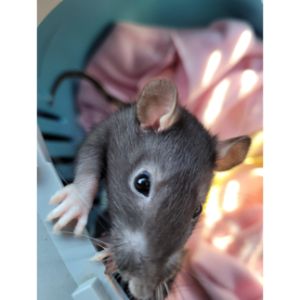
Now you know how long rats can go without food. You can use this information in times of emergency to determine whether your rat will be OK. But never intentionally let it go that long without food.
If you find this guide, “How Long Can a Rat Live Without Food,” informative and helpful, you can check out these other rat-related articles from our team:
You can learn more about rats by watching “10 Surprising Facts About Rats – Intelligent, Adorable, and Even Altruistic!” down below:

